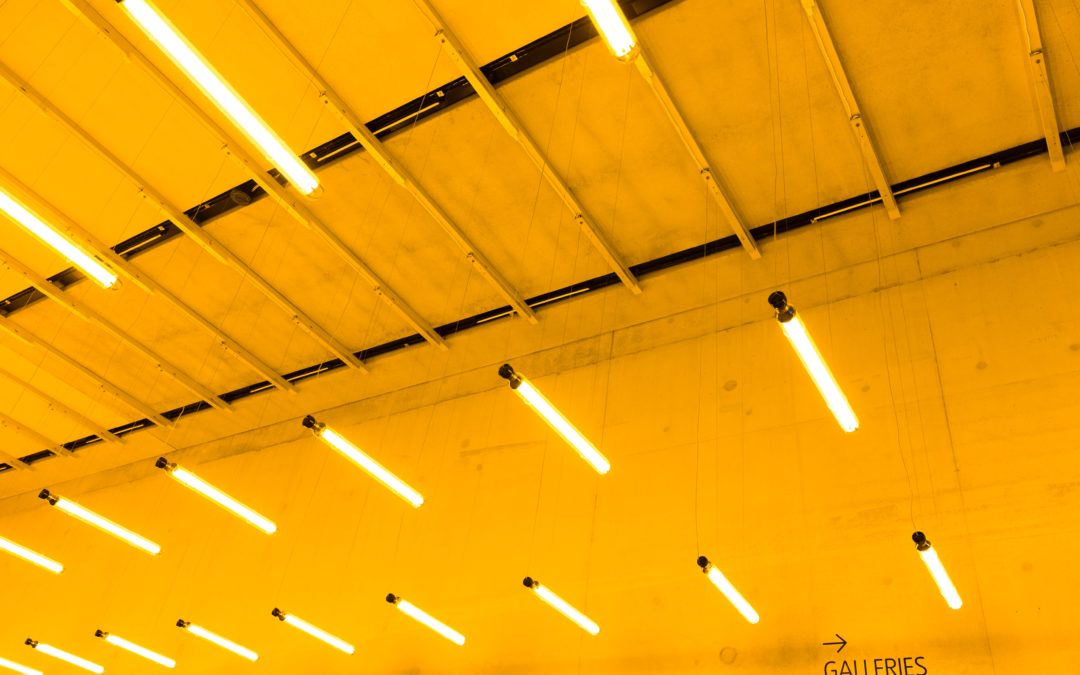Lighting is a critical part of cleanroom design. This system allows employees to properly view what they’re working on, improves the efficiency of your cleanroom operations, and can even help identify contaminants to help keep your cleanroom clean. Which cleanroom lighting is best for your application? Let’s explore your options to help you decide.
How to Choose Cleanroom Lighting
You’ll want to choose cleanroom lighting that is as illuminating as it is simple to maintain and clean. Additionally, consider the way your lights are mounted and how they work with your overall cleanroom design to help you reach your cleanroom classification. The cleanroom lighting you choose must be highly efficient and contaminant-free. The fixtures and any mounting mechanisms must be able to be cleaned effectively and ensure no contaminants can enter the cleanroom.
LED Cleanroom Lighting
LED lighting is known to be more durable and longer-lasting, require less maintenance, and use less energy than incandescent lighting. Plus, LEDs are extremely bright, which is a useful quality for aerospace cleanrooms where a lot of illumination is needed.
Cleanroom Lighting: Useful Measurements to Know
When choosing cleanroom lighting, you’ll need to understand how lights differ by comparing their measurements. Here are a few useful measurements to know:
Watts: measures how much energy is required to power the light
Foot-candles: measure the distance light reaches, by square feet
Lux: measure the intensity of light produced, as interpreted by the human eye
Lumens: measure light output
Depending on the use of light in your cleanroom, you will use these measurements differently. For example, if work in your aerospace cleanroom is task oriented and needs light to focus on small parts, you’ll require brighter, more intense lighting that allows significant illumination of the work area without causing employees to strain their eyes. Conversely, work over a broader area that isn’t detail-focused will need to prioritize area coverage, but not necessarily intensity.
Mounting Cleanroom Lighting
How lighting is mounted is another important part of choosing the right fixtures for your cleanroom. When comparing lighting systems, consider how much space the lighting system will occupy on the ceiling, a factor that is especially important when ceiling space must also be shared with filtration and fan units.
The way your cleanroom lighting is mounted will also determine how you access it to perform service such as replacing bulbs, fixing wiring, or cleaning the fixtures. Lighting can be mounted so that it is accessible from inside the cleanroom, but keep in mind this means all servicing of lights will interfere with cleanroom processes. Lights can also be installed from above. The advantage of this is that accessing lights does not mean as much of an interruption for the room below, and keeps contaminants from entering from the lighting space. However, this option requires more space above the ceiling for access.
Types of Cleanroom Lighting
Each aerospace cleanroom will have specific lighting needs and varying amounts of available ceiling space. Because of this, there are many different types of cleanroom lights to choose from. Here are a few common types of cleanroom lighting:
Flat Panels
Flat panels are mounted flush with the ceiling. They provide a lot of light and are easy to clean. Because of their wide panel design, this cleanroom lighting type requires more ceiling space compared to other options, which makes it less than ideal for cleanrooms with stringent filtration requirements.
Teardrop Lighting
More stringent cleanroom classifications prioritize ceiling space for fan units and filters. Lighting, therefore, is a secondary concern and must work around the filtration system.
Teardrop lighting extends below the ceiling to allow for precious ceiling space to be used for filtration. The teardrop shape allows an uninterrupted flow of air around the lighting without creating turbulence. The disadvantage of teardrop lighting is that it takes up valuable headspace within the cleanroom environment.
LED Lighting Grid
Batten lighting, or lighting strips, are linear LED lighting which is integrated with the ceiling grid system. This allows adequate space for fan/filter units around filters. Wiring for the lights is also built into the grid system so it provides consistent light throughout space without taking up a lot of room on the ceiling.
Recessed Lighting
Recessed lighting units sit in the ceiling on a gasket to create an airtight seal. While they leave plenty of headroom, recessed lighting requires extreme care when servicing to ensure no contaminants are trapped when light is accessed. In cleanrooms with extremely stringent requirements, recessed lights and filtration can be combined in singular units for ultimate space-saving capabilities.
Expert Cleanroom Design and Lighting Help
An expert cleanroom designer will make choosing cleanroom lighting easier. They can work with you and your specific application to determine which types of lighting and mounting options will best complement your design needs. An cleanroom expert can:
- Help decide which lighting can be used to perform different tasks in your cleanroom — specific to your application and workers’ needs.
- Help design lighting to fit around other features of your cleanroom design, including filtration and mounted equipment.
- Allocate control panels where they are accessible and convenient for staff.
- Choose energy-efficient lighting fixtures that will maximize productivity while minimizing operational costs.
Cleanroom lighting is an essential part of your cleanroom design and should work with all the other elements to make a high functioning cleanroom for your application. If you’re still unsure which lighting option is best for you, talk to a cleanroom design expert about your concerns and specific project requirements.
Need a little help designing your cleanroom? Call the experts at Angstrom Technology. From lighting to flooring, we can help you make the best choices for your budget and your application.


